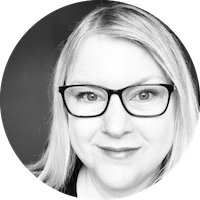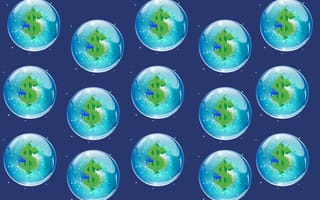Churn happens. It’s the cost of doing business in a subscription-based software world. The challenge is predicting when it’s going to happen and reducing it.

That’s what’s known in the customer success world as the holy grail, said Kristen Hayer, founder of the customer success consulting firm The Success League. Every company she’s worked with is trying to build a churn prediction model, but she has yet to come across one that’s perfected it.
That’s because the causes that lead to churn are often as imperceptible as a paper cut, added Christina Cronin, who’s the director of customer success at Drift. It could be a disjointed onboarding experience, a lack of product traction or a key stakeholder leaving. It could also be all of the above, or none of those reasons at all.
“There’s no silver bullet,” Cronin said.
What Is Churn Prediction?

But that doesn’t mean trying to predict churn isn’t worth the effort. SaaS companies make most of their revenue after the initial sale, which means mitigating churn is necessary for survival, Hayer said. Churn prediction factors in customer data to help companies identify the clients who are least likely to renew, typically through a so-called health score.
Building a churn prediction model can help companies forecast revenue for the year and develop strategies for retaining high-risk customers. While it’s impossible to build a model that’s 100 percent accurate, churn prediction is something every company should tackle if it wants to grow.
“Predicting it helps you get ahead of churn and ideally prevent it, which is what everyone is trying to do,” Hayer said. “You have to think about it outside of just, ‘How satisfied are our customers with us?’ and get to that leading indicator, which is what you need to have to drive change.”
5 Things to Know About Churn Prediction
- Analyze your most and least successful customers to understand why customers churn.
- Conduct exit interviews with customers and ask leaders of customer-facing teams what they think causes churn. Test those hypotheses against customer data to start building your prediction model.
- Identify four or five leading indicators of churn to create a health score. This score should give you a snapshot of which customers are at risk of churning.
- Clean your data before you adopt a churn prediction tool. Make sure all necessary customer information is entered in the CRM and the customer base is up to date for the best results.
- Use churn prediction to focus on big-picture retention strategies.
Why Churn Prediction Matters

Amanda Ingraham doesn’t believe it’s possible to predict churn, but she does see churn prediction as a valuable tool.
As the VP of customer success at the performance management software company 15Five, Ingraham thinks about it less in terms of prediction and more as a form of pattern detection. She uses customer data to find and track the triggers that might lead to increased product adoption — or an increased likelihood of churn.
This can be the usual data points like product usage and customer success engagement, but also seasonal trends. During employee-review season, for example, she knows there are spikes in new customers and contracts up for renewal.
For her, it works best to review the book of business a quarter ahead and try to forecast churn. That allows her to roll out team-wide customer success strategies to improve retention, and it gives her managers the opportunity to focus on the customers who need the most support.
At Drift, Cronin uses churn prediction to forecast annual metrics around gross dollar retention (how much of the customer base a company retains each year) and net revenue retention (a number that factors in lost customers and customer upsells). But she also reviews account health scores and business trends on a quarterly basis to come up with retention strategies.
“There’s no magic wand to predict what your retention will look like month over month.”
“There’s no magic wand to predict what your retention will look like month over month,” she said. “But we put a lot of effort into it at Drift because [retention] is one of the main drivers and biggest goals for the company.”
Churn Prediction 201: Building a Model
Start With the Data
Before you can start building a churn prediction model, you need to understand why customers are leaving in the first place.
While customers may tell you their reasons in exit surveys, that’s not always a true reflection of what caused them to leave, Hayer said. Instead, the real answer lies in the data.
Hayer suggests first looking at two sets of data, that of the most successful customers and that of the customers who were quickest to churn. From there, it’s about figuring out what the customers in each group have in common with each other.
Some useful leading indicators to look at include: product usage trends, how often the client engaged with the customer success manager, support tickets filed and the client’s number of users. That can give you a snapshot of how the most and least successful customers engage with the product, Hayer said.
But it’s also helpful to look at company demographics like industry, company size and revenue. Sometimes companies lose clients when those clients reach a certain revenue threshold or experience a regional economic downturn — factors that have nothing to do with the product, she added.
“List out everything that could possibly be causing a customer to churn, and then use your data to design tests to see if that’s true or not.”
Just don’t rely solely on customer satisfaction. That may seem counterintuitive, but Hayer pointed to a study from the book The Effortless Experience that found there is no correlation between customer satisfaction and retention.
She also suggests having CEOs and other executives on customer-facing teams list their own theories as to why customers churn. In this exercise, there are no wrong answers — even when a CEO suggests that customers are churning because the customer success team calls them too often, Hayer said.
“List out everything that could possibly be causing a customer to churn, and then use your data to design tests to see if that’s true or not,” Hayer said. “You can always modify your model later, but that’s a good way to come up with an initial model for what makes a customer sticky.”
The next step is to fine-tune your model by consulting industry benchmarks. Since churn is different for each business size, Cronin recommends researching best-in-class SaaS retention rates for enterprise, mid-market and SMB clients. From there, you can compare how your historical churn rate in each segment compares to the benchmarks.
This gives you a sense of where you can improve and what to reasonably forecast for the year.
“Our ops and finance teams take a look at what our 2021 plan is for the year, where we need to land from a revenue perspective, and then do a regression based on historical trends to set our goal for each business segment,” Cronin said.
How to Calculate Your Health Score
Once you identify your leading indicators for churn and retention, you can build a health score.
Health scores give customer success leaders a snapshot of how likely individual accounts are to churn. The healthiest customers get a green score, those on the fence are yellow and the ones at the highest risk of churning are red.
At Drift, Cronin starts reviewing account health scores with the customer success manager six months before contract renewal. The snapshot allows her and the CSM to home in on risky accounts and figure out what they can do to transition them from red to green.
There is no single metric that customer success leaders can rely on to predict customer health, Cronin said. Instead, the best health scores are a mix of objective metrics and subjective insights from the CSM working the account.
“You don’t want to water it down.”
So, where do you begin?
Ingraham suggests limiting your health score to the four or five metrics that are most strongly correlated with customer success. (“You don’t want to water it down,” she explained.) For 15Five, those metrics include how many users log in, how many support tickets they filed, core feature usage rates and the customer success manager’s impressions of the account.
Next, you need to determine what a healthy rate looks like for each metric. This is where identifying patterns in customer data for the most successful and least successful accounts can help.
For user logins, 15Five’s health target is set at 75 percent of users logging into its platform every 30 days. Clients will then receive negative scores if they fall below that mark, and higher scores if they are near the number or over it.
15Five then weights each metric by importance to determine the score, with subjective inputs like CSM sentiment receiving the least weight.
Still, that subjective data is important, Ingraham said. Customers are people, not numbers. For example, a CSM may have a close relationship with an account and, thus, insight into why its low usage rate isn’t a concern. While the other metrics are more predictive, that observation still carries weight when forecasting an account.
What to Know Before You Buy a Churn Prediction Tool
While you can build a health score and churn forecast in a spreadsheet, dedicated customer success tools have started to incorporate machine learning and predictive analytics to make those tasks easier.
Ingraham and her team use ChurnZero to calculate health scores, while Hayer said tools like Gainsight, Totango and Strikedeck help simplify the process. Those tools are what get Hayer excited about the future of churn prediction.
“It changes the conversation because it gives you enough time to actually plan.”
Where manual spreadsheets could only take into account four or five data points, machine learning can process thousands to generate more accurate results farther out. And when companies can predict high-risk customers a year out, for example, it makes churn a company-wide responsibility.
“You can figure out how you’re going to tackle churn with your product shifts, and how you’re going to make it easier for the customer to work with you,” Hayer said. “It changes the conversation because it gives you enough time to actually plan.”
But before you rush out to purchase one of those tools, make sure your customer data is in shape, she added.
That means combing through the CRM and making sure the customer list is up to date. She’s come across companies with customer lists so out of date they didn’t even know whether they had 38 customers or 41.
It’s also important to make sure any data you’ve manually collected — like company size or even what product the customer bought — is entered into the CRM. It’s a big project, Hayer said. She’s spent late nights entering this information by hand.
Ultimately, the tools enhance the work a company has already put in around customer success. The more accurate the customer data is and the more processes are in place, the more accurate the churn prediction model will be.
“You have to know how you’re going to run your team before you buy a tool,” Hayer said. “The tool just automates it, it doesn’t make it up for you.”
Focus on Big-Picture Goals to Increase Retention
When Ingraham joined 15Five’s six-person customer success team two-and-a-half years ago, churn prevention was an all-hands-on-deck exercise.
“We were trying really hard to create processes, but it was kind of a free for all: Talk to your customers, try to mitigate churn and make them happy,” Ingraham said.
A lot has changed since then. For starters, the team has grown to 20, and its customer success processes have solidified. But its churn prediction model has gotten stronger too. Now, instead of focusing on putting out fires as they come up, the team can be more proactive to increase retention.
“What this process has done is help prioritize the work.”
This has opened the door for bigger retention initiatives, like building a team-wide play to increase customer adoption of its employee-review feature.
“Those kinds of things have been really helpful for us to increase adoption of products, which rallies the team, which increases net revenue retention, which increases expansion and mitigates churn,” Ingraham said. “We’re starting to move toward thinking, ‘Every quarter, let’s have a thing and rally behind it.’”
Ultimately, that’s the biggest benefit of churn prediction, she added. It can be difficult for customer success managers to see the bigger picture when they jump from customer to customer. Building a churn prediction model directs their focus to the right retention efforts — and even aligns the business around churn prevention.
“What this process has done is help prioritize the work,” Ingraham said. “You’ve got a million things coming at you, but we know that this is happening with this customer, and we have a plan. Let’s utilize that plan.”




